The Browser Company launches a $20 monthly subscription for its AI-powered browser

The Browser Company Introduces $20/Month Subscription for Its AI-Powered Browser: A Bold Leap into the Future of Web Browsing In a world where web browsers have long been viewed as free utilities—basic tools for accessing the internet—the idea of paying a monthly subscription for one may seem surprising, even controversial. But The Browser Company, the innovative startup behind the rising browser alternative Arc, is challenging that assumption head-on. In a bold and disruptive move, the company has announced a $20-per-month subscription plan for its new AI-powered browser experience. This development signals more than just a pricing change—it reveals a profound shift in how we define productivity, digital privacy, and the value of intelligent software. But what makes this browser worth paying for? And what does this mean for users, developers, and the future of the internet? Let’s break it down. From Free to Premium: Why Now? The web browser market has long been dominated by giants like Google Chrome, Safari, and Firefox—all of which are free to use. Their business models are generally ad-driven (like Chrome) or supported by larger ecosystems (like Safari’s integration with Apple products). So why is The Browser Company asking users to pay $20 a month? The answer lies in its AI-first philosophy. Unlike traditional browsers that merely open web pages, Arc (and its newer AI-enhanced version) is designed to augment human productivity, enhance creativity, and automate repetitive digital tasks. It’s not just a portal to the internet—it’s an intelligent partner in your daily workflow. By charging a subscription fee, the company positions its product not as just a browser, but as a premium productivity and automation tool—like Notion, Grammarly, or ChatGPT Pro. What Does the AI Browser Actually Do? At the core of this pricing model is a radically reimagined browser experience. Instead of simply rendering websites, the AI-powered Arc browser acts as a co-pilot for your digital life. Here are some of the key features: ✅ Smart Search with Context Arc’s AI understands the context of your tabs, notes, calendar, and browsing history, offering smart search results not just from the web, but from your own digital workspace. Looking for that document you opened last week while researching? Just ask. ✅ Auto-Organization of Tabs No more cluttered windows with 36 open tabs. Arc’s AI can categorize, group, and even archive tabs based on your behavior, usage frequency, or project relevance. ✅ Writing and Summarization Tools Whether you’re drafting an email, a blog post, or reviewing long research documents, the AI can summarize, suggest rewrites, or even generate content right within the browser. ✅ Meeting & Email Integration AI assistants can review your calendar, prep notes before meetings, or summarize emails—turning your browser into a virtual assistant dashboard. ✅ AI Workflows and Automations The browser integrates with apps like Notion, Figma, Slack, Google Docs, etc., and allows you to build custom automation workflows. Think of it as Zapier or IFTTT—but built into your browser, controlled by natural language. This is not a browser for casual web surfing. It’s a power tool for professionals—designers, writers, researchers, developers, and executives—anyone whose day is spent juggling digital inputs and outputs. Why $20? Is It Worth It? Let’s be honest: $20 per month for a browser is not for everyone. For many users, Chrome or Safari is more than enough. But for digital professionals and knowledge workers, $20 a month is a small price for hours saved, friction removed, and creativity enhanced. Here’s a simple analogy: people pay $10/month for Spotify to get music without ads. Professionals pay $30–$50/month for productivity suites like Microsoft 365 or Adobe Creative Cloud. So if a browser can become your workspace, your assistant, and your creative partner, the price starts to make sense. It’s not just about web browsing anymore—it’s about transforming how you work with the internet. Privacy and Trust: A New Business Model Another important aspect of this move is privacy. The Browser Company has made it clear that it will not monetize user data, unlike ad-driven browsers. The subscription model allows them to focus on user-centric design and privacy-first innovation. With growing global concerns around data misuse, surveillance capitalism, and AI ethics, this stance will likely resonate with privacy-conscious users. Instead of being the product, you are now the customer—and that changes everything. The Bigger Picture: Reinventing the Web Experience This subscription model is not just a pricing decision; it’s a signal. The Browser Company is betting on a future where AI is embedded at the interface level, not just in search engines or separate apps. Here are a few broader implications: 🌐 1. The Browser Becomes a Platform Just as iOS became more than a phone OS, Arc is positioning the browser as a platform for digital productivity, app integration, and custom AI assistants. 🤖 2. AI at the Center of Workflows Instead of switching between ChatGPT, your tabs, your email, and your calendar, everything becomes AI-powered and centralized—no more app-hopping. 💼 3. A New Market: The Premium Browser Segment Just like we now have premium note-taking apps (Notion Pro), premium writing tools (Grammarly), and premium AI assistants (ChatGPT Plus), we’re entering an era of premium browsers. This move will likely inspire competitors, startups, and even big tech to explore similar directions. Potential Risks and Challenges Of course, this model is not without risks. ⚠️ Adoption Barrier Convincing users to pay for something they’ve always had for free is a major challenge. The Browser Company will need powerful onboarding, strong demos, and trial models to show the value. ⚠️ Feature Overload Packing a with too many features can overwhelm users. The company must balance power with simplicity. ⚠️ Competitive Response If major browsers like Chrome or Edge start integrating similar AI features for free, it could pressure Arc to justify its premium tag continuously : The Future is Here, and It Has a Price Tag The Browser Company’s launch of a $20/month subscription for its AI browser is a bold and visionary step. It’s not just about monetizing
Upwork is buying its way into corporate staffing beyond freelancers
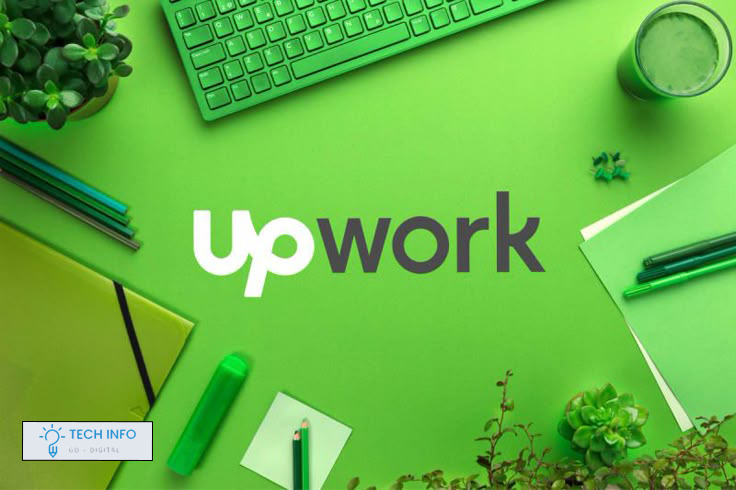
Upwork’s Corporate Shift: Moving Beyond Freelancers into Enterprise Staffing In the evolving world of work, digital platforms have transformed how talent connects with opportunities. Among these platforms, Upwork stands tall as a pioneer and leader in the freelancing industry. Traditionally seen as a marketplace for independent professionals and small businesses, Upwork is now venturing into corporate staffing—a move that signals not just expansion, but transformation. This strategic shift represents a broader trend in the gig economy: freelancing is no longer just about individuals picking up side gigs—it’s about large-scale, flexible workforce solutions. Upwork is not merely adapting to change; it is trying to define the future of staffing. But how is Upwork making this leap, and what does it mean for freelancers, clients, and the workforce at large? From Freelancing Platform to Workforce Solution Provider Upwork’s journey began with a simple idea: connect businesses with independent talent worldwide. Over the years, it grew by supporting freelancers in IT, writing, marketing, customer service, and more. But as demand for agile talent increased post-pandemic, Upwork began exploring new frontiers. Now, the company is aggressively targeting the enterprise and midmarket segment. It wants to go beyond individual contracts and become a comprehensive staffing partner for large corporations. The platform is no longer just a connector of gigs; it’s becoming an outsourcing partner, workforce manager, and staffing solution provider—often in direct competition with traditional staffing agencies. Strategic Acquisitions and Partnerships A key part of this transformation is buying its way into the corporate world. While Upwork has not made splashy billion-dollar acquisitions like some tech giants, it has strategically invested in technology, services, and enterprise solutions that allow it to appeal to larger clients. Upwork’s Enterprise Suite is tailored for businesses that need large teams, project management capabilities, compliance control, and centralized billing. It mimics traditional staffing services but with the flexibility and cost-efficiency of freelance work. Through targeted partnerships with project managers, HR tech platforms, and compliance tools, Upwork is quietly building an infrastructure that resembles that of a staffing firm—with a digital core. The company is also growing its Talent Scout and Project Catalog features to streamline hiring processes, ensuring that businesses can scale projects with confidence, speed, and security. These offerings are now bundled with account management, reporting tools, and talent curation—services that enterprise clients expect from professional staffing vendors. Why This Shift Now? Several macroeconomic and workforce trends explain why Upwork is making this move: 1. Changing Workforce Dynamics Companies are moving toward hybrid and remote models, requiring talent that is not bound by geography. With freelancing already normalized during the pandemic, businesses are now comfortable sourcing entire teams online. 2. Cost Efficiency and Flexibility Unlike permanent staffing, freelance solutions offer on-demand talent, reduce overhead, and lower long-term HR costs. This is attractive in uncertain economies where agility is a business necessity. 3. Talent Scarcity Traditional hiring methods often fail to meet urgent or highly specialized staffing needs. Upwork provides access to global talent pools, making it easier for businesses to find the right skills faster. 4. Digital Transformation Companies are adopting digital tools to manage workforce operations. Upwork fits into this digital-first strategy by offering a fully online, scalable, and compliant hiring platform. The Blurring Lines Between Freelancing and Staffing Upwork’s shift raises an important question: Is it still a freelancing platform, or is it turning into a digital staffing firm? The answer is somewhere in between. Upwork still champions freelancer independence, but with its increasing role in enterprise workforce orchestration, it resembles a tech-enabled staffing agency. It’s not simply matching talent with tasks—it’s curating teams, managing workflows, ensuring legal compliance, and even tracking performance. That’s far more than freelancing—it’s workforce management. What sets Upwork apart, however, is its platform-based approach. Unlike traditional staffing firms that rely on human recruiters, Upwork uses AI-powered algorithms, data analytics, and self-service dashboards to facilitate hiring at scale. It’s bringing technology to staffing, making it faster, cheaper, and more flexible. Implications for Freelancers For freelancers, Upwork’s pivot offers both opportunities and challenges. ✅ Opportunities: ❌ Challenges: Impact on Traditional Staffing Agencies Upwork’s rise in the enterprise space is a disruptive threat to traditional staffing firms. These firms, which have long dominated corporate hiring, now face a digital rival that offers: Unless staffing firms adapt and digitize, platforms like may eat into their market share, particularly in tech, marketing, and creative roles. Already, some agencies have started partnering with freelancing platforms rather than competing head-on. The Road Ahead: Platformization of Staffing What Upwork is doing is more than diversification—it’s platformizing the staffing industry. Just as Uber changed transport and Airbnb disrupted hospitality, Upwork is trying to redefine hiring and workforce deployment. In the near future, we can expect: This is not just evolution—it’s a reimagination of work. Conclusion Upwork’s move beyond freelancing into enterprise staffing is a bold step toward the future of work. By combining freelancer freedom with corporate structure, it is offering a hybrid model that may very well become the standard. For businesses, it means greater agility. For freelancers, it opens new doors. And for the staffing industry, it signals disruption. As work continues to move online and organizations become borderless, platforms like are positioning themselves not just as service providers—but as the architects of the new work order.
Google denies AI search features are killing website traffic
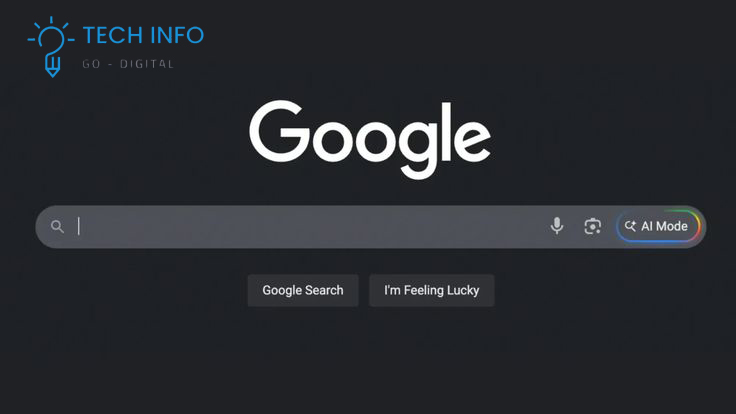
🧠 Google Denies AI Search Features Are Killing Website Traffic: The Full Story With the rapid evolution of artificial intelligence, particularly in how it’s integrated into search engines, a heated debate has emerged: Are AI search features killing website traffic? While many publishers and SEO professionals claim they are experiencing massive declines in organic traffic, Google has publicly denied these claims. According to the tech giant, its AI-powered Search features are not destroying the open web—but rather improving user experience and even helping some websites gain higher-quality visits.Google denies AI search features So, who’s right? Let’s explore the controversy, the facts, and what this means for online content creators. 🚀 What Are AI Search Features? Google’s AI features, especially AI Overviews, are designed to summarize search results directly on the search engine results page (SERP). This means instead of scrolling through blue links, users can get instant answers based on a blend of reliable sources. For example, if a user searches “how to lose weight fast,” the AI might generate a concise, bullet-pointed summary based on top-ranking content—without requiring the user to click any link.Google denies AI search features This approach saves time for users, but for website owners, it poses a risk: if users get their answers from Google directly, why visit the original site? 🧩 What Google Is Saying In an official blog post published in August 2025, Google strongly denied that AI Overviews are harming websites. Key takeaways from their defense include: Essentially, Google’s argument is: AI isn’t killing traffic—it’s changing it. 📉 The Other Side: What Publishers Are Experiencing While Google paints an optimistic picture, many website owners and industry experts are seeing something different: 1. Declining Click-Through Rates (CTR) Since AI Overviews display summarized content directly, users are less likely to click on the source link. As a result: 2. Smaller Publishers Are Hit Hardest Independent websites and niche bloggers, who rely heavily on organic search traffic, are reporting sudden drops in page views and revenue. 3. Legal and Antitrust Concerns Some companies, such as Chegg, have even filed legal complaints, alleging that Google’s AI is repurposing their content without proper attribution or traffic redirection. 🤖 AI and Zero-Click Search: The Real Threat? “Zero-click search” isn’t new. Even before AI, Google had featured snippets, instant answers, and “People Also Ask” sections. But with AI, these zero-click interactions have become more advanced and more frequent. In a traditional search model: User → Query → Clicks a link → Visits website In the AI model: User → Query → Gets AI answer → No need to click While users benefit from faster answers, the original content creators often lose out. Imagine investing time, money, and creativity into a high-quality blog post—only for AI to summarize it in one line with no user engagement. 📊 Data Doesn’t Lie: Conflicting Numbers Here’s what different sources are saying: Source Claim Google (2025) Search traffic stable; some content types gaining Search Engine Journal CTR for top organic links declining due to AI summaries Reddit/SEO forums Many publishers report traffic losses of up to 50% NYPost / WSJ AI Overviews disrupting ad revenues, legal complaints filed SEO Analytics Tools Spike in zero-click queries post-AI rollout So while Google insists the sky isn’t falling, much of the independent data suggests clear, negative impacts for many websites. 🌐 The Bigger Picture: Is the Web at Risk? The open web thrives on discoverability, traffic, and monetization. If AI continues to summarize and answer questions without proper redirection or attribution, it could discourage: This isn’t just about traffic—it’s about incentive. Why create content if it won’t bring visibility or income? 🛡️ How Publishers Can Adapt Even if AI is reshaping how users interact with search, there are strategies to stay visible: 1. Focus on E-E-A-T Google values content with Expertise, Experience, Authoritativeness, and Trustworthiness. Invest in creating content that showcases your unique human voice. 2. Use Structured Data Implementing schema markup (e.g., FAQs, How-to, Reviews) helps search engines understand and properly display your content. 3. Create Multimedia Content Videos, podcasts, infographics, and interactive tools are less likely to be replaced by AI summaries. 4. Build Direct Channels Relying only on search traffic is risky. Grow your email list, social media presence, and direct traffic to your site. 5. Explore AI Licensing Some AI companies are starting to license content from creators. Stay informed about potential partnerships or monetization opportunities. 🧭 Final Thoughts: Who’s Right? Is Google being honest? Or are they downplaying the damage? The answer may lie somewhere in the middle. ✅ Google may be correct that some websites are thriving in the AI era.❌ But it’s also clear that many others are struggling, especially if their content is purely informational and easily summarized. The future of content and traffic will depend on how fairly and transparently AI systems credit and support creators. If done responsibly, AI can enhance the web. But if not, it may undermine the ecosystem that gave it the knowledge to begin with.Google denies AI search features Conclusion Google’s denial of AI search features harming web traffic has sparked serious discussion in the tech and publishing worlds. While the company maintains that AI is helping users and not hurting content creators, independent data and user reports tell a more complicated story.Google denies AI search features The digital landscape is evolving fast. As a content creator, staying informed, adaptable, and diverse in traffic sources is more critical than ever.
WhatsApp adds new features to protect against scams

WhatsApp’s add new Features: Protecting Users from Scams WhatsApp’s add new Features In today’s digital world, messaging apps are a core part of how we stay connected. With over 2 billion users worldwide, WhatsApp stands out as one of the most widely used platforms for both personal and professional communication.WhatsApp adds new features However, this popularity also makes it a prime target for scammers, hackers, and fraudsters. In response, WhatsApp has launched several new security features to help users protect their accounts from scams, phishing attacks, and unauthorized access. Why WhatsApp Security Updates Matter Cybercriminals are constantly evolving their tactics, and messaging platforms like WhatsApp are among their favorite targets. Common scams include: To address these threats, WhatsApp has added multiple layers of protection, giving users more control over their data and privacyWhatsApp’s add new Features 2. WhatsApp’s New Security Features to Prevent Scams A. Account Protect: Stopping Unauthorized Transfers One of the most common risks is account theft, where scammers try to move your WhatsApp to a different device. How it works: Why it matters:Many scams succeed because users unknowingly share their 6-digit verification code. With Account Protect, your account is safe even if your code is compromised. B. Device Verification: Blocking Malware Attacks Some hackers use malware-infected apps to gain control of WhatsApp accounts without the user’s knowledge. How it works: Why it matters:This feature prevents attackers from sending spam or scam messages through your account—protecting you and your contacts. C. Automatic Security Codes: Verifying Encryption WhatsApp uses end-to-end encryption to ensure that only you and the person you’re chatting with can read your messages. However, users used to verify this manually. What’s new: Why it matters:It helps prevent man-in-the-middle attacks, where someone might try to intercept your conversations by posing as a trusted contact. D. Privacy Checkup: A Guided Security Setup Many users aren’t aware of WhatsApp’s privacy settings—and this can leave them exposed. What’s new: Why it matters:This tool helps users take control of their privacy without needing any tech E. Silence Unknown Callers: Reduce Scam Calls Scammers often use international or unknown numbers to make fake calls pretending to be customer support or other entities. How it works: Why it matters:This reduces spam, robocalls, and phishing attempts through fake calls. Additional Tips to Stay Safe on WhatsApp While these features make WhatsApp safer, your actions also play a big role. Here are some quick tips: ✅ Enable Two-Step Verification (Settings > Account > Two-step verification)✅ Never share your verification code — even with friends✅ Look for the encryption lock icon in your chats✅ Report and block suspicious messages or contacts✅ Avoid clicking on links in messages that seem too good to be true A Safer Messaging Experience With features like Account Protect, Device Verification, and Automatic Security Codes, WhatsApp is taking serious steps to protect its users from modern cyber threats. Still, user awareness is key. Stay alert, regularly check your privacy settings, and report anything suspicious. By combining these new tools with smart habits, you can enjoy WhatsApp with confidence and peace of minds
European leaders worry they’re too reliant on U.S. tech

European Leaders Worry They’re Too Reliant on U.S. Tech – A Wake-Up Call for Digital Sovereignty In recent years, European leaders have grown increasingly uneasy about their continent’s overwhelming dependence on American tech giants like Google, Microsoft, Amazon, Meta, and Apple. From cloud infrastructure and artificial intelligence to digital advertising and search engines, the dominance of U.S. firms in Europe’s digital ecosystem has triggered a call for “digital sovereignty.” 🇺🇸 U.S. Tech: Backbone of European Systems? Much of Europe’s digital infrastructure is powered by U.S.-based companies. Major government services, financial systems, healthcare data, and corporate operations rely on platforms like Microsoft Azure, AWS, and Google Cloud. While these tools offer cutting-edge efficiency and innovation, they also raise critical concerns: 🛡️ The Push for Digital Sovereignty European policymakers are calling for reduced dependence on foreign tech firms and increased investment in homegrown technologies. This has led to strategic initiatives such as: 🇪🇺 The Challenges Ahead Despite ambitions, Europe faces stiff hurdles: 🔄 Dependency vs. Collaboration It’s not about cutting ties with the U.S.—but about balancing power. The goal is not isolationism, but resilience. Europe wants partnerships on equal footing, not dependencies. Many experts argue for building a transatlantic tech alliance based on shared values—democracy, privacy, and rule of law—while still encouraging Europe’s digital self-reliance. 🧠 Final Thoughts Europe’s tech future hinges on strategic autonomy. The current dependency on U.S. platforms is not just a business concern—it’s a sovereignty issue. The path forward involves:
Nvidia’s AI empire: A look at its top startup investments
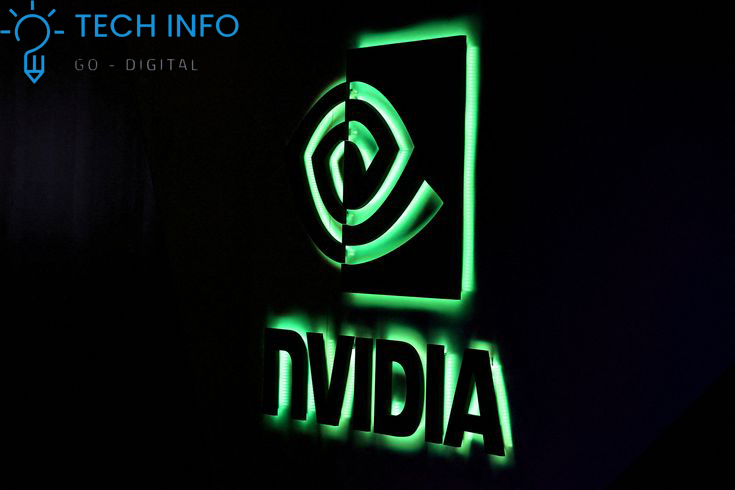
Introduction: Why Nvidia Invests in AI Startups Nvidia’s investment strategy goes beyond simple financial returns. The company is future-proofing its AI dominance by: ✅ Locking in GPU Demand – Startups using chips create long-term customers.✅ Shaping Industry Standards – Investments in AI frameworks (like CUDA) ensure Nvidia remains the default choice.✅ Acquisition Pipeline – Some startups (like DeepMap) later become Nvidia acquisitions.✅ Countering Rivals – Preventing AMD, Intel, or custom silicon (like Google TPUs) from gaining ground. Key Example: Nvidia’s $50M investment in Recursion Pharmaceuticals (AI drug discovery) ensures its GPUs remain essential in biotech. . Nvidia’s Most Strategic AI Startup Investments Autonomous Vehicles & Robotics Startup Focus Nvidia’s Role Why It Matters Wayve (UK) End-to-end self-driving AI Powers AI training on DGX Leading Europe’s AV race WeRide (China) Level 4 robotaxis DRIVE platform integration Nvidia’s foothold in China Cruise (USA) GM-backed robotaxis GPU-powered real-time AI Battling Waymo & Tesla Zoox (Amazon) Autonomous EVs Sensor fusion with Nvidia AI Amazon’s bet on future mobility 💡 Insight: Nvidia dominates autonomous driving with over 85% of AI chips in this sector. 🤖 Generative AI & LLMs Startup Focus Nvidia’s Role Why It Matters Cohere (Canada) Enterprise LLMs Runs entirely on Nvidia GPUs Alternative to OpenAI Hugging Face Open-source AI models Optimized for Nvidia NeMo Key to AI democratization Inflection AI Conversational AI (Pi chatbot) Trained on DGX supercomputers Personal AI assistant race 💡 Stat: Over 90% of generative AI startups rely on Nvidia GPUs for training. 🏥 Healthcare & Biotech AI Startup Focus Nvidia’s Role Why It Matters Recursion Pharma AI drug discovery Uses Nvidia Clara imaging Speeding up medicine Owkin Federated learning for hospitals Nvidia FLARE integration Privacy-safe medical AI Insilico Medicine AI for aging research Generative chemistry on GPUs Longevity science boom 💡 Impact: Nvidia-powered AI could cut drug discovery time from 10 years to 2. 🏭 Robotics & Industrial AI Startup Focus Nvidia’s Role Why It Matters Figure AI Humanoid robots Jetson platform for training Next-gen labor automation Covariant Warehouse robotics GPU-accelerated RL Logistics revolution Sanctuary AI General-purpose robots Edge AI with Nvidia AI that “thinks” like humans 💡 Prediction: Nvidia-powered robots could replace 20% of factory jobs by 2030. ⚡ AI Chips & Infrastructure (The Wild Cards) Startup Focus Nvidia’s Interest Why It’s Strategic Cerebras Wafer-scale AI chips Potential HPC partner Hedge against GPU limits SambaNova Dataflow AI processors Alternative architecture Diversifying AI compute Lightmatter Photonic AI chips Future beyond silicon Next-gen computing bet 💡 Risk: If these succeed, they could disrupt Nvidia’s GPU dominance. Nvidia’s Broader AI Investment Strategy Beyond direct investments, Nvidia: 🔹 Runs NVIDIA Inception – A 10,000+ startup accelerator program.🔹 Funds University AI Labs – MIT, Stanford, and others push AI research.🔹 Partners with Big Tech – Microsoft Azure, AWS, and Google Cloud all run on Key Move $100M investment in Hugging Face ensures its GPUs remain central to open-source AI. 4. The Future: What’s Next for Nvidia’s AI Empire? 🔮 5 Key Trends to Watch: 1️⃣ Generative AI Arms Race – More investments in LLM startups (like Mistral AI).2️⃣ AI Factories – Nvidia’s new DGX Cloud lets startups rent supercomputing power.3️⃣ Quantum + AI – Startups like QC Ware blend quantum computing with machine learning.4️⃣ AI Regulation Risks – US/China tensions may impact investments like WeRide.5️⃣ Rising Competition – Startups exploring non-Nvidia chips (Groq, Cerebras). Nvidia’s AI Dominance Isn’t Slowing Down Nvidia isn’t just selling GPUs—it’s building the entire AI economy. By strategically investing in autonomous vehicles, generative AI, healthcare, and robotics, ensures its hardware stays indispensable.
The Biggest AI Breakthroughs of May 2024

The Biggest AI Breakthroughs of May 2024: What You Need to Know The AI revolution is moving at lightning speed, and May 2024 delivered some jaw-dropping innovations that could reshape entire industries. Here’s your quick rundown OpenAI’s GPT-4o: Real-Time, Emotionally Intelligent AI OpenAI launched GPT-4o (“o” for omni), a multimodal powerhouse that understands text, audio, and vision simultaneously. It’s faster, more conversational, and can even pick up on emotions in your voice. We’re one step closer to truly natural AI interaction. AI Breakthroughs Google’s Project Astra: Your Eyes and Brain on AI Think Google Lens on steroids. Project Astra is an AI assistant that sees through your camera, understands context, and helps you in real time. From diagnosing hardware issues to recognizing your surroundings, it’s your pocket-sized genius. Meta’s Llama 3 + AI Personas: Open-Source with Personality Meta dropped Llama 3, its most capable open-source model yet, alongside quirky AI characters (including a sarcastic one). The open-source AI space just got a lot more competitive—and a lot more fun. Microsoft’s Copilot+ PCs & “Recall” Feature: Memory Meets AI Microsoft’s new Copilot+ PCs come with Recall, an AI feature that can remember everything you’ve done on your machine. It’s like having a time machine for your screen—but raises some serious privacy questions. AI Breakthroughs DeepMind’s AlphaFold 3: The Future of Biotech Google DeepMind upgraded its groundbreaking tool: AlphaFold 3 can now model proteins, DNA, and RNA—paving the way for faster drug discovery and breakthroughs in medicine. OpenAI’s Sora Eyes Hollywood: AI-Generated Films Incoming? OpenAI’s Sora, a text-to-video AI model, is being quietly tested in Hollywood. Could this be the beginning of AI-powered cinema? Don’t be surprised if your next favorite film was written and directed by a machine. AI Ethics & Regulation: The Gloves Are Off Governments are waking up. The EU’s AI Act is rolling out, and the U.S. is tightening regulation. As innovation accelerates, so does the tug-of-war between safety and progress. 💡 Why This Matters These aren’t just flashy headlines—they’re shaping the future of work, creativity, science, and society. With AI moving from labs to daily life, the question isn’t “what’s next,” but: are we ready for it?
Windsurf says Anthropic is limiting its direct access to Claude AI models

The Claude API Crackdown: Anthropic’s Strategic Shift and the Ripple Effects Across AI AI models: A Watershed Moment for AI Accessibility The AI industry is undergoing a fundamental transformation as leading model providers transition from open ecosystems to walled gardens. Anthropic’s recent restrictions on Claude API access through platforms like Windsurf represent more than just a policy change – they signal a paradigm shift in how advanced AI will be commercialized and controlled. This comprehensive analysis examines: Section 1: The Anatomy of Anthropic’s Decision 1.1 The Safety-First Imperative Anthropic’s “Constitutional AI” framework creates unique constraints: 1.2 The Economics of Scale Operating frontier models requires staggering resources: 1.3 The Performance Calculus API restrictions correlate with measurable quality improvements: Section 2: The Platform Fallout – Beyond Windsurf 2.1 The API Dependency Spectrum Platforms are affected differently based on integration depth: Platform Type Impact Severity Migration Cost Strategic Options Thin Wrappers (Basic UI on Claude) Critical Low Pivot or shutdown Augmented Services (Value-added features) High Medium Model switching Multi-Model Systems (Claude as one option) Moderate Variable Rebalance weighting 2.2 The Substitution Challenge Alternative model integration isn’t plug-and-play: 2.3 The Financial Ripple Effects Downstream economic impacts are emerging: Section 3: The New Model Ecosystem 3.1 The Enterprise Gateway Model Anthropic is pioneering a tiered access framework: 3.2 The Open Source Countermovement Community-driven alternatives are accelerating: 3.3 The Hybrid Future Forward-thinking platforms are adopting: Section 4: Strategic Playbooks for Affected Companies 4.1 The Negotiation Framework Securing continued access requires: 4.2 The Technical Migration Path Successful transitions require: 4.3 The Business Model Pivot Alternative monetization strategies: Section 5: The Road Ahead – Projections to 2025 5.1 The Coming Access Tiering Expected market segmentation: 5.2 The Regulatory Domino Effect Upcoming policy changes: 5.3 The Consolidation Wave Market structure predictions: Navigating the New AI Order The Claude API restrictions represent an inflection point that demands strategic reassessment. Successful adaptation requires:AI models For Platforms: For Developers: For Enterprises: The AI market is entering an era of managed access and controlled growth. While challenging, this transition may ultimately lead to more sustainable, safe, and economically viable AI ecosystems. The winners will be those who adapt quickly, negotiate strategically, and build resilient technical architectures.
Irish fintech NomuPay lands $40M at a $290M valuation from SoftBank
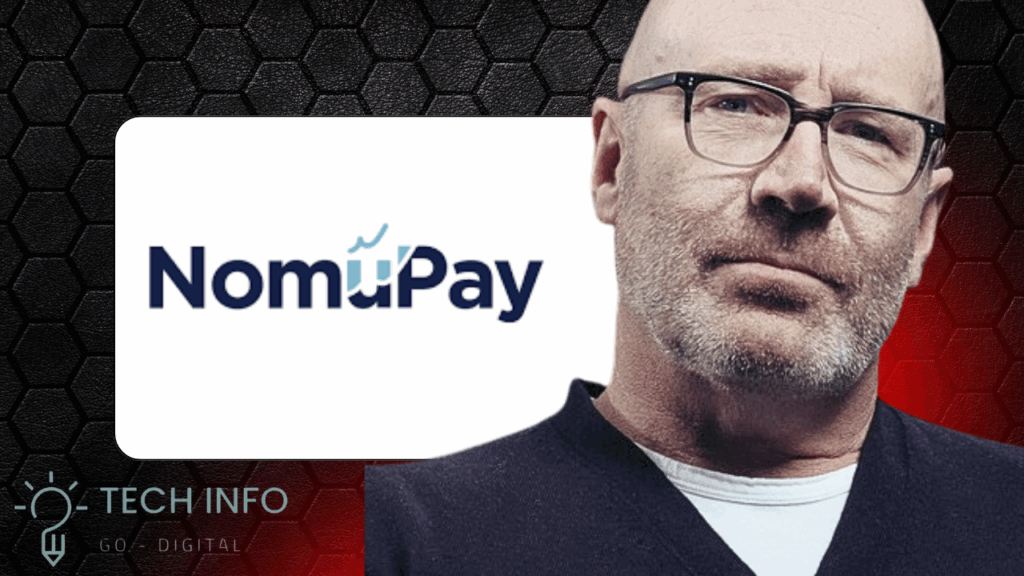
NomuPay Secures $40M from SoftBank at $290M Valuation: A Deep Dive into the Irish Fintech’s Rise The fintech industry continues to witness groundbreaking investments, and the latest headline-maker is NomuPay, an Irish payments startup that has just secured $40 million in funding from SoftBank, catapulting its valuation to $290 million. This strategic investment underscores the growing confidence in NomuPay’s innovative payment solutions and its potential to disrupt the global fintech landscape. In this blog post, we’ll explore: 1. Who is NomuPay? Company Overview NomuPay is an Ireland-based fintech startup specializing in next-generation payment solutions. The company focuses on cross-border payments, merchant services, and digital banking infrastructure, catering to businesses looking for seamless, cost-effective transaction processing. Founding & Evolution NomuPay was founded with the vision of simplifying global payments for businesses, particularly SMEs and e-commerce platforms. The company has built a scalable, API-driven payment infrastructure that enables faster settlements, lower fees, and enhanced security compared to traditional banking systems. Key Offerings NomuPay’s technology has already gained traction in Europe, Asia, and emerging markets, positioning it as a strong contender in the competitive payments sector. . SoftBank’s $40M Investment: What It Means for NomuPay Deal Breakdown Why SoftBank Invested SoftBank’s investment signals strong confidence in NomuPay’s ability to scale in the high-growth fintech space. The Japanese investment giant has a history of betting on disruptive payment companies, and NomuPay’s technology stack, global ambitions, and strong leadership team likely played a key role in securing this funding. Use of Funds NomuPay plans to allocate the fresh capital towards: This funding will help NomuPay compete with giants like Stripe, Adyen, and Checkout.com while carving out its niche in cross-border payments. 3. NomuPay’s Market Position & Competitive Edge Competitive Landscape The global payments industry is dominated by: NomuPay differentiates itself by:✔ Focusing on underserved markets (SMEs in emerging economies)✔ Lower transaction costs compared to legacy providers✔ Faster settlement times through blockchain-inspired tech✔ Strong compliance & licensing (key for cross-border transactions) Growth Metrics While exact revenue figures aren’t public, NomuPay has reportedly: This growth trajectory makes it an attractive bet for investors like SoftBank. 4. Future Growth & Expansion Plans Target Markets NomuPay is eyeing expansion in: Product Roadmap IPO Potential? If NomuPay maintains its growth rate, an IPO by 2026-2027 is plausible, following the path of companies like Adyen and Wise. . The Broader Fintech Investment Trend Why Payments Startups Are Hot SoftBank’s Fintech Bet SoftBank has doubled down on fintech with investments in: NomuPay’s Journey Ahead NomuPay’s $40M funding round at a $290M valuation is a major milestone, validating its potential to become a global payments leader. With SoftBank’s backing, the company is well-positioned to expand into high-growth markets, enhance its tech stack, and challenge established players. For fintech enthusiasts, investors, and businesses, NomuPay is a startup to watch closely—it could very well be the next big thing in payments. What do you think? Will NomuPay become the next Stripe, or will competition prove too fierce? Let us know in the comments!
Elon Musk’s Neuralink raises $600M at $9B valuation
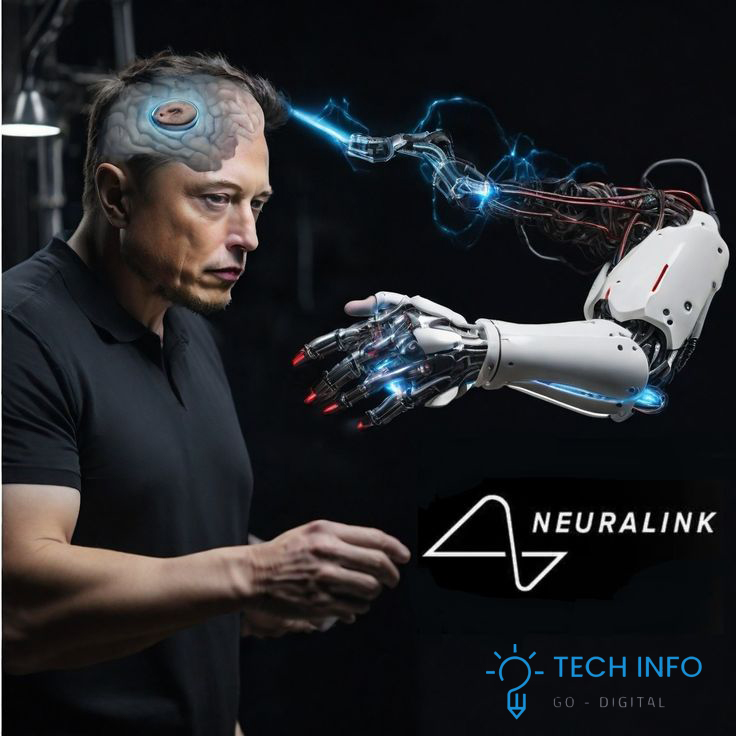
Introduction Neuralink’s $600M Funding Milestone: Redrawing Humanity’s Technological Frontier The neurotechnology sector witnessed a seismic shift this week as Elon Musk’s Neuralink Corporation announced a $600 million Series D funding round at a $9 billion valuation. This landmark investment – one of the largest single rounds in neurotech history – arrives as the company prepares for commercial deployment of its N1 brain-computer interface (BCI) system. The financing positions Neuralink to accelerate human trials, expand manufacturing capabilities, and develop next-generation neural implants that could redefine human-machine interaction within this decade.Elon Musk’s Neuralink raises $600M at $9B valuation I. The Neuralink Vision: From Sci-Fi to Clinical Reality Founded in 2016, Neuralink operates at the intersection of neuroscience, robotics, and artificial intelligence. The company’s core technology centers on ultra-high bandwidth BCIs designed to create a symbiotic relationship between biological and artificial intelligence. TheElon Musk’s Neuralink Recent FDA approvals for limited human trials in paralysis treatment (2024) and early-stage epilepsy management (2025 Q1) demonstrate growing regulatory confidence. The company’s PRIME Study (Precise Robotically Implanted Brain-Computer Interface) has enrolled 12 quadriplegic participants across three U.S. medical centers as of May 2025. II. Decoding the $9B Valuation: Investor Confidence Breakdown This funding round’s architecture reveals strategic priorities: Investment Allocation Percentage Key Objectives Clinical Trials Expansion 35% Quadruple trial sites to 48 by 2026 Manufacturing Scale-up 30% Achieve 10,000 implants/year capacity R&D Acceleration 25% Develop visual cortex interface prototypes Regulatory Compliance 10% Global certification pathways Notable investors include: The valuation multiple (15x projected 2026 revenue) reflects confidence in Neuralink’s first-mover advantage in the $37B neuroprosthetics market projected by 2030 (Grand View Research). III. Transformative Applications: Beyond Medical Miracles A. Medical Frontiers (2025-2030) B. Human Enhancement Horizon (2030+) C. AI Symbiosis Musk’s vision of “consensual telepathy” aligns with Neuralink’s AI alignment research division, developing neural feedback loops to prevent AI value drift. IV. The Thorny Path: Technical and Ethical Challenges Technical Hurdles Ethical Quagmires Recent controversies include FDA scrutiny over primate trial disclosures (2023) and neuroethicist protests at trial sites. Neuralink’s response includes establishing an independent Neuroethics Board (April 2025) with $10M annual funding.Elon Musk’s Neuralink raises $600M at $9B valuation Elon Musk’s Neuralink V. The Neurotech Arms Race: Competitive Landscape Neuralink’s funding dwarfs competitors but faces formidable rivals: Company Technology Funding Stage Synchron Stentrode $145M FDA-approved stroke rehab Paradromics Connexus Array $85M Chronic pain trials Blackrock Neurotech NeuroPort $65M 35+ years human experience Facebook Reality Labs Wrist-based BCI N/A Consumer AR integration Neuralink’s edge lies in wireless operation and Musk’s vertical integration capabilities through Tesla (power systems) and SpaceX (advanced materials).Elon Musk’s Neuralink raises $600M at $9B valuation Conclusion: The Neuralink Inflection PointThis funding round accelerates three critical timelines: As Neuralink prepares its Fremont manufacturing facility for mass production, the world stands at the threshold of a new era in human evolution. While technical and ethical challenges remain formidable, this $600M vote of confidence suggests the neural revolution isn’t coming – it’s being surgically implanted. Call to Action Follow Neuralink’s progress through their official trial updates and participate in the neuroethics discourse shaping our collective future. The conversation about what it means to be human in the age of machine integration starts now – and it’s happening directly inside our skulls.Elon Musk’s Neuralink raises $600M at $9B valuation

